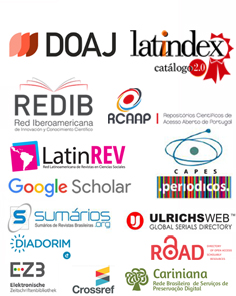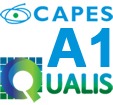Proceso de Revisión por Pares
Todos los manuscritos enviados a la Revista Mundos do Trabalho están sujetos a una revisión por pares doble ciego, basada en dos principios fundamentales. Las identidades de los autores y revisores no se revelan entre sí, y dos revisores externos participan en el proceso de evaluación y toma de decisiones. Además, la evaluación incluye cuatro pasos específicos:
Lista de Verificación de Preparación del Manuscrito
En primer lugar, los autores deben verificar y cumplir con la Lista de Verificación de Preparación del Manuscrito:
1) El manuscrito es original e inédito y no está siendo evaluado por otra revista;
2) La identificación de autoría ha sido eliminada del cuerpo del texto, de las notas y de las propiedades de los archivos de todos los documentos enviados para evaluación (revise el menú “Propiedades” en todos los documentos a cargar);
3) Los archivos de texto de envío están en formato .docx, .rtf o .odt, y su tamaño no excede los 2 Megabytes;
4) Todas las direcciones de páginas de Internet incluidas en el texto están activas y listas para hacer clic (por ejemplo, http://www.ibict.br);
5) El texto sigue todos los estándares de estilo y requisitos bibliográficos descritos en las Directrices para Autores; el texto usa cursiva en lugar de subrayado (excepto direcciones URL); y las figuras y tablas se insertan en el texto, no al final;
6) El autor (es) tiene un registro ORCID (https://orcid.org).
En segundo lugar, los editores comprueban si el manuscrito está de acuerdo con la Lista de Verificación de Preparación del Manuscrito y con el alcance temático de la revista. Los manuscritos que no sigan estos criterios serán rechazados inmediatamente y se informará a los autores sobre la decisión. Los autores pueden impugnar y revertir la decisión si se prueba el error de los editores.
Revisión Externa
Si el manuscrito cumple con los criterios de la revista, pasa al tercer paso de evaluación. En este caso, los Editores eligen dos revisores externos para evaluar el manuscrito y su relevancia para el campo de la Historia Laboral, tomando en consideración los siguientes aspectos: objetivos, originalidad, fundamento teórico, fuentes de investigación y metodología. Los revisores deben señalar trabajos relevantes publicados relacionados con el tema del manuscrito, pero no citado por el autor. Deben decidir y justificar con precisión si el manuscrito debe ser publicado y elegir una de las cuatro opciones: a) aprobado sin cambios; b) aprobado con cambios menores; c) aprobado con cambios estructurales; d) rechazado. Las evaluaciones contradictorias se someten a un tercer revisor externo y los editores verifican el informe antes de decidir sobre la viabilidad de la publicación.
Decisión y Apelaciones
Finalmente, los editores comunican la decisión de la revista a los autores, así como el contenido de las revisiones. Si el manuscrito se aprueba incondicionalmente (opción a), los editores inician el proceso de edición del texto con los autores. Si el manuscrito se aprueba condicionalmente (opciones b o c), los editores establecen un plazo razonable para que los autores realicen las correcciones antes del proceso de edición del texto.
Si los autores no están de acuerdo con las correcciones requeridas o con el rechazo del manuscrito (opción d), los autores pueden solicitar una reevaluación proporcionando una explicación clara y completa del disenso. Los editores analizarán la solicitación y su justificación antes de abrir una nueva ronda de evaluación con otros revisores. De lo contrario, se concluye el proceso de evaluación. Si los autores no finalizan las correcciones dentro del plazo establecido por los editores, también se concluye el proceso de evaluación, y el manuscrito no será publicado.
Conflicto de Intereses
En caso de conflicto de intereses, los revisores no deben aceptar evaluar el manuscrito. Deben declarar a los editores si se identifica tal condición e interrumpir la evaluación de inmediato. Este principio elimina cualquier tipo de conflicto de intereses, tales como: el revisor está empleado en la misma institución que la de los autores; el revisor ha supervisado los autores en los últimos cinco años. El revisor también debe negarse a producir un informe si el manuscrito que ha sido revisado se parece a una publicación que ha estado preparando o que se publicará próximamente.
Problema Ético con un Manuscrito Enviado
Si un editor o un revisor plantea preocupaciones éticas sobre un manuscrito enviado (como los descritos en la Política de Retractación de la revista), los editores seguirán la Guía COPE para solucionar la cuestión.








